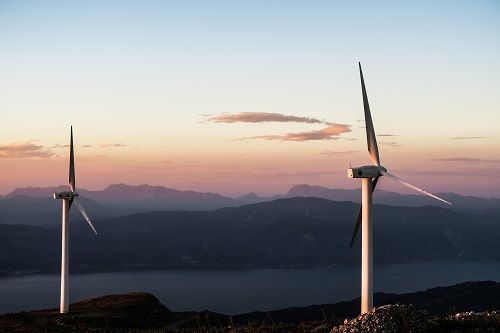Since its highs in 2022, the price of electricity has fallen significantly, providing relief for consumers and companies. "In the medium term, however, the price will remain volatile and will tend to rise in the medium term," predicts Markus W. Voigt, CEO of the aream Group. This is due to the growing demand for electricity and the high costs of expanding grids and storage facilities.
The production costs for generating green electricity are likely to fall further. At the same time, however, other factors are driving up prices. For example, renewable energy production capacities need to be significantly expanded if Germany is to achieve its target of sourcing 80% of its electricity from renewable sources by 2030. The electricity grid must be expanded by around 14,000 kilometers of high-voltage lines.
In addition, storage facilities need to be expanded. According to Voigt, expanding the storage volume could be helpful for intraweek/daily fluctuations in electricity prices and counteract developments such as negative prices. "In the next seven to ten years, however, there will be no solution to the problem that not only electricity consumption fluctuates seasonally, but also electricity production from renewable energies," says Voigt. Large-volume seasonal storage would have to be created here if we want to decouple from gas. "The lead time is so long," explains Voigt, "that there is no solution in sight for the impending volatility of electricity prices in the medium term.
Furthermore, electricity consumption will rise sharply in the future. In transport, for example: according to government plans, 15 million electric vehicles will be on Germany's roads by 2030, compared to just 1.3 million at present. "Consumption in this area could therefore increase more than tenfold," says Voigt. German industry also needs more electricity in the course of its decarbonization and electrification. After all, it consumed around 496,719 GWh of natural gas in 2022, which needs to be replaced by alternative energies.
Other drivers of electricity demand are the replacement of fossil fuels in heating and cooling technology, the increasing number of networked devices and IoT applications, the introduction of technologies such as 5G, artificial intelligence and blockchain. And finally, gas heating systems in buildings need to be replaced by electric heating systems. "This modern infrastructure also requires more electricity," explains Voigt.
Overall, the figures and factors mentioned are therefore likely to lead to volatile and possibly rising electricity prices in Germany, predicts Voigt. Even the expansion of nuclear power in Europe will not change this: "On the contrary: cost increases in connection with prolonged delays and/or outages can have a further cost-increasing effect."
PRESSEKONTAKT:
Leandra Kiebach
T: +49 (0)211 30 20 60 4-2
E: lk@aream.de
